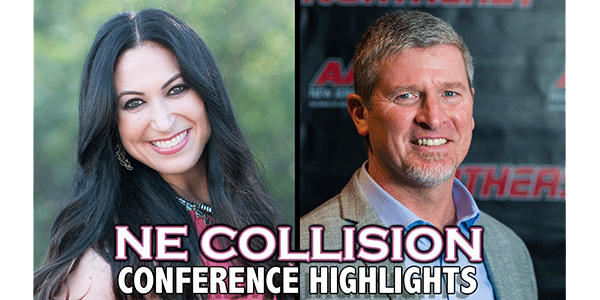
I feel that the word “lean” used to really mean something in the auto body industry, and owners were hypervigilant about becoming lean. But in today’s world, lean is almost commonplace and devoid of any oomph behind it. Why is that?
I Have Arrived!
I believe that, as an industry, we’ve become callous to what lean means and feel that when it was first talked about (at every waking conference), we took advantage of what we learned and implemented some of those strategies. So, in essence, we checked that lean box and were good to go.
For instance, I talked with shops across the country and asked them if they were running lean. They all answered with a quick “Yes!” It was almost as if they were saying, “Is there any other way?” When I asked them why they felt they were running lean, they cited one or two things they were doing in their shops that had been derived from the lean way of thinking. Therefore, they thought they had “arrived”!
The Concept of Lean
I’d like to take a moment to refocus on what lean production means for shops and why I think it fizzled away like a day-old beer (er, I mean, soda) left open on the counter.
The concept of lean production founded by Kiichiro Toyoda and Taiichi Ohno was fairly complex in that it encompassed a lot of specific processes needed to create lean production. Yet, the concept was pretty straightforward: quickly, efficiently, with no waste, happy employees, teamwork and error-free. Wow! That’s all?! (Insert eye-roll here.)
I believe the hard part for the auto body world was how to take that lean production concept and merge it with the repair process. Many of us couldn’t wrap our heads around it, so we picked a few things we felt we could do that could potentially help our shop and left it at that.
You Say Lean…I Say Mind Bender
Now let me point out that a truly lean shop is like a utopia that no one ever truly attains because there’s always a way to be more lean. Lean is a neverending journey. Plus, most shops are not capable of completely scrapping every process they have and starting over to do it the most lean way possible. (And if you are, let us know so we can come drool over your unicorn shop!)
So, instead of talking about running your shop lean, let’s call it running your shop the most efficient way possible. As a matter of fact, when I asked some of my paint partners if they provide lean classes today like they used to, they said they do but they have modified most of the titles. For example, Axalta has “Repair Planning” and FinishMaster has “NuVentory” and “Lean Tech.”
Why is that? Why did they have to change the name from Lean Repair 101 or whatever they used to call it to something different? As I said earlier, I believe most shops were overwhelmed by the lean process and others felt that they already had attained it because they had made a few changes.
Lean Fast
As most of you already know, I used to own my own shop in Van Nuys, Calif., called Casa Body Shop or Casa Automotive Group Body Shop. When the economy took a downturn in 2007, my shop became lean very quickly! No manual needed! As I cut expenses left and right and started to dial in my expenses and revenue, I realized how much “fat” my shop had been carrying. I couldn’t believe how lean I could run from a financials standpoint.
I then began attending lean workshops, and although I was excited at the process, I left with my eyeballs spinning in my face and my brain on fire. So, I asked my friend, Curt Nixon, if I could tour his shop, “L” Monte Body Shop in El Monte, Calif. After seeing how he ran his facility with such great processes and following a lean mindset, I knew I wanted to be just like him when I grew up. Ha! Ok, so maybe not exactly. But I tell ya, what an inspiration his mindset was! And there was no denying the success he was having with “keys-to-keys” cycle time, rental days, customer satisfaction and loyalty, and insurance relationships.
I ran right back to my shop and, without even blinking, switched my management systems to Summit so I could have my techs and writers move the vehicle status and have everyone clearly on the same page. I purchased computer work stations for every employee so clear information would be at everyone’s fingertips regarding any vehicle in the shop. I began tearing down all vehicles, blueprinting and waiting for every part to come in before starting the repair and watched my cycle time decrease and errors at completion dwindle. At the time, I thought, “Look at me! My shop is so lean!” In comparison to where it was before, yes, it was lean. But was there more I needed to do to continue on that lean path? Yes.
Eat that Cake One Bite at a Time
Just like we talked about in my article, “Competing with the Big Boys,” in the March 2019 issue of BodyShop Business, it’s not about eating the cake all in one bite. It’s about taking it one bite at a time, one small step at a time that allows you to tackle the big things. This is often where shops fail at running lean or more efficiently.
This is where I was failing because everything sounded really great but I wasn’t even sure where to start! I (maybe like you) felt like I needed to do it all at once. I began to feel overwhelmed, and then I sat and did nothing until I went to see a shop firsthand that was having success and had some specific, attainable goals. Where other shops get stuck in their quest for lean is attempting to adjust something and finding out the adjustment didn’t work. They then panic and resume doing things the old way to keep pumping out work – hence, no change.
A Fresh Look
Here are some ways for you to take a fresh look at your business and see where you can increase your efficiency and not get bogged down by feeling like you have to tackle it all at once:
Do you have a specific area you know you need help with? Or several? List them by priority.
This is going to sound odd, but if you have a list of a few main issues, it’s smart to work through those backwards. Start with the smallest issue because it will be the easiest one to fix. You’ll then gain confidence from that win and build momentum toward fixing the next issue. You’ll need to create a strong process for each item as you work through them and make sure all employees are totally on board. Get that working cleanly with full buy-in (especially from management), then move on to the next item!
Are You Not Sure Where You Need Help?
Some shops think they’re doing pretty well but don’t have any metrics or true feedback. I would recommend you start looking through the CSI reports you get from your insurance partners, your Yelp feedback, etc., and see what your customers are loving about you and where they’re finding faults. Many shops find it valuable to have an internal CSI program that only management or owners can see that allows them to keep tabs on their customers’ experiences. I have a great review driver if that’s something you’d like to look into. Either way, find out what your customers are saying behind your back! No one likes to be talked about behind their back, but it happens. And you need to know what they’re saying so you can fix it!
Do you feel like you’re doing everything pretty well but think getting more cars in your door would be a huge help?
You’ll need to do some marketing of some kind (and I know a great marketer you can call or email if you need a referral – wink wink, nudge nudge), but I’d say this is a great time to sit down and look at your books. Ugh. Boring! Books! But, really. If you need someone to work with you, then your accountant should be able to help you decipher your ledgers. Honestly, anyone can start with the basics and then work through them.
I can tell you from experience that as you start to go down your expense list, you realize there are many ways to save money and many contracts you can adjust. Little savings all start to add up! Then, work through your moneymakers. How can you make more money on what you’re already doing? For example, are you charging insurance for storage when they leave a vehicle over a certain number of days? Have you visited the discussion about your parts discounts recently? If you aren’t a dealership-driven shop, then you should be shopping around for deeper discounts.
Summary
There are always processes that can work more efficiently (a.k.a. “lean” to put the most money in your pocket and smiling faces on your customers and staff).
What will be your first process to work on? I’d love to hear!













